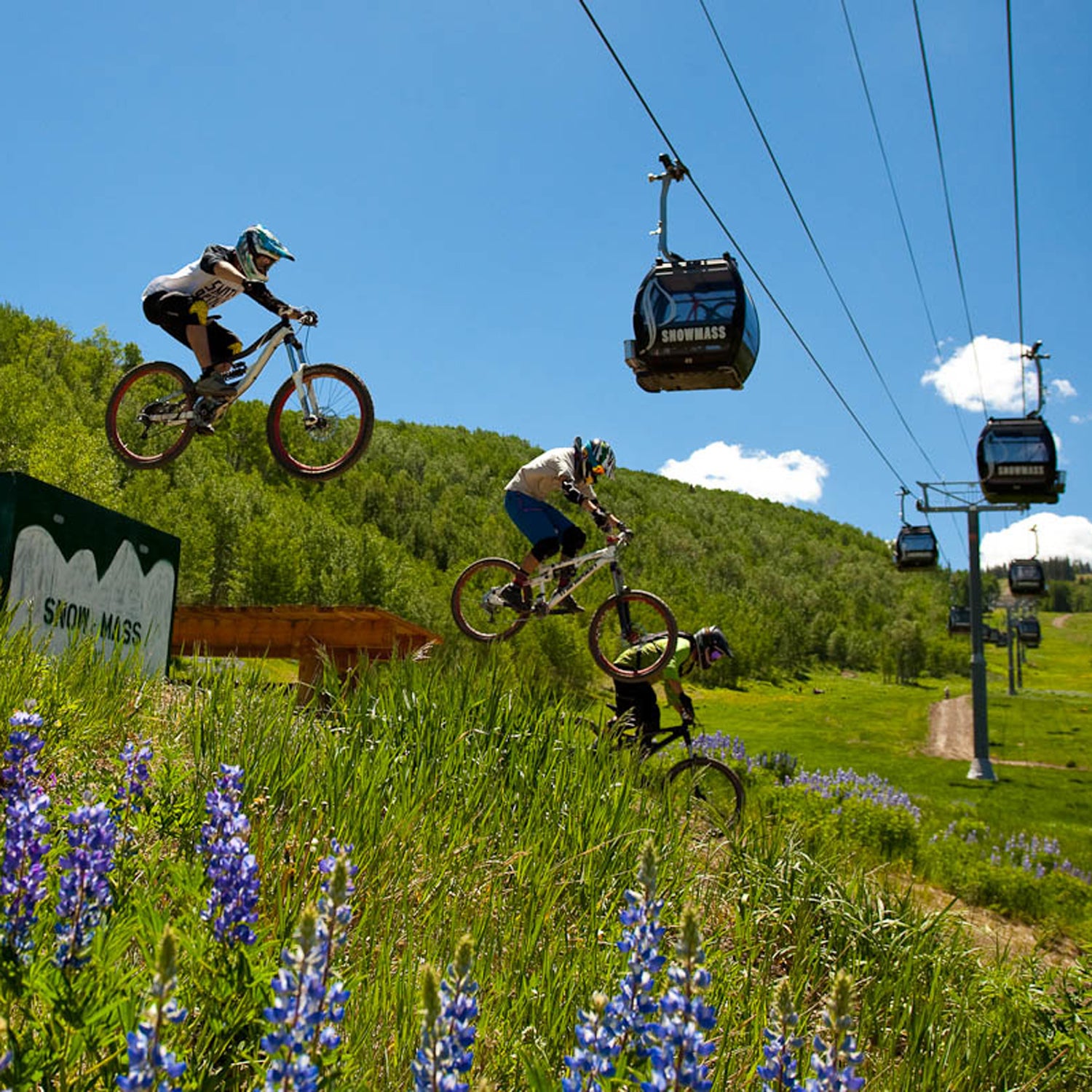With shrinking visitor numbers and low-snow seasons afflicting ski areas around the West, resort owners are realizing that attracting wintertime guests alone isn’t enough to survive.
“Our winter visitors numbers are flat,” says Annie Cutler, marketing manager for Utah’s . “Ski resorts rely heavily on Mother Nature and snow, so the smart thing to do is make sure we invest in our summertime game. It’s hard to be sustainable these days if you don’t have a summer product.”
Like many resorts, Sundance has seen a significant increase in summer business—so much so that it’s now comparable to winter in terms of revenue and visitors. From May to November, the resort had seven straight months of record revenue, making this summer more profitable than any previous winter. Cutler credits the spike, in part, to the resort’s new zipline, the third longest in the U.S., which opened in May and sold out most weekends. Plus, there’s lift-accessed mountain biking and live music and theater programs all summer long. Telluride, Aspen, Big Sky, and other resorts have started offering similar summer activities.
The impetus for the change came in 2011, when President Obama signed a bill, sponsored by then Colorado Senator Mark Udall, which amended a previous law from the 1980s that restricted ski areas on Forest Service land from offering any recreation besides skiing. The amendment, called the , allowed resorts to provide summer activities like zip lines, mountain bike parks, Frisbee golf, and ropes courses, so long as they were in harmony with the natural environment. (Water slides, big roller coasters, and golf courses are still prohibited.)
A series of dismal winters followed, and resorts once known as snowy epicenters rapidly started changing their business plans. , near Lake Tahoe, has proposed building an indoor-outdoor recreation center, complete with climbing walls and zip lines, that would turn its winter village into a year-round destination. “Visitation to North Lake Tahoe slows in the spring—even in years when snowfall is significant,” Squaw’s CEO Andy Wirth in the Auburn Journal. “To remain competitive, we have developed—with substantial community input—a plan consistent…with our mountain resort culture.”
has operated at a loss during the summer months, , but it has a new strategy to close that gap: this summer, it’s launching a program dubbed that will boost summer offerings like ropes courses, an alpine coaster on elevated rails, and hiking trails with educational signage. The program will also debut at other Vail Resorts properties, including this summer and Breckenridge Ski Resort in 2017.
, the Wyoming ski hill down the road from mega resort , may have gone under were it not for its new summer operations. In October, it opened a mountain coaster with views of the Tetons and this spring, it will debut a treetop ropes course. On top of the resort’s existing bungee trampoline and alpine slide, it recently opened a shop to rent paddleboards and bikes.
“We needed to diversify our revenue streams,” says Keely Herron, Snow King’s marketing director. “Snow King Mountain hasn’t turned a profit in years. So since 2012, the mountain has been undergoing massive transformations. The main benefit for visitors is we’re providing an awesome summertime experience for all.”
As warming trends continue, expect more struggling resorts to make summer a mainstay instead of an afterthought.


